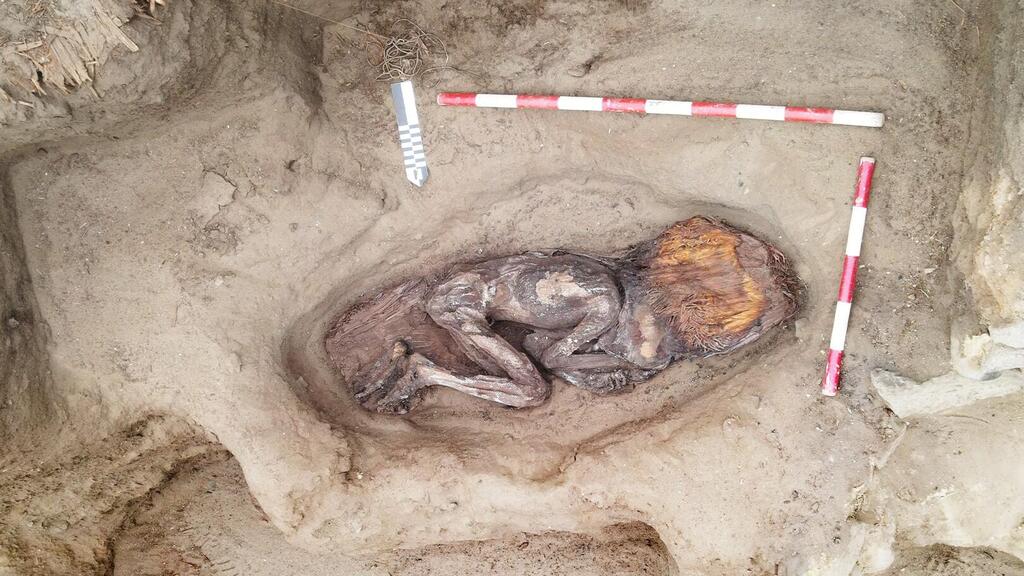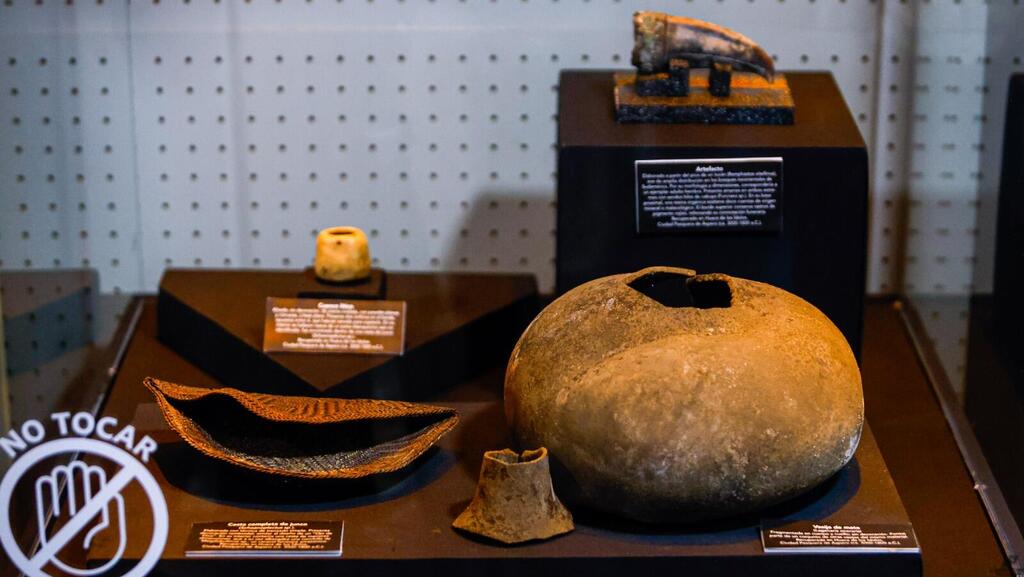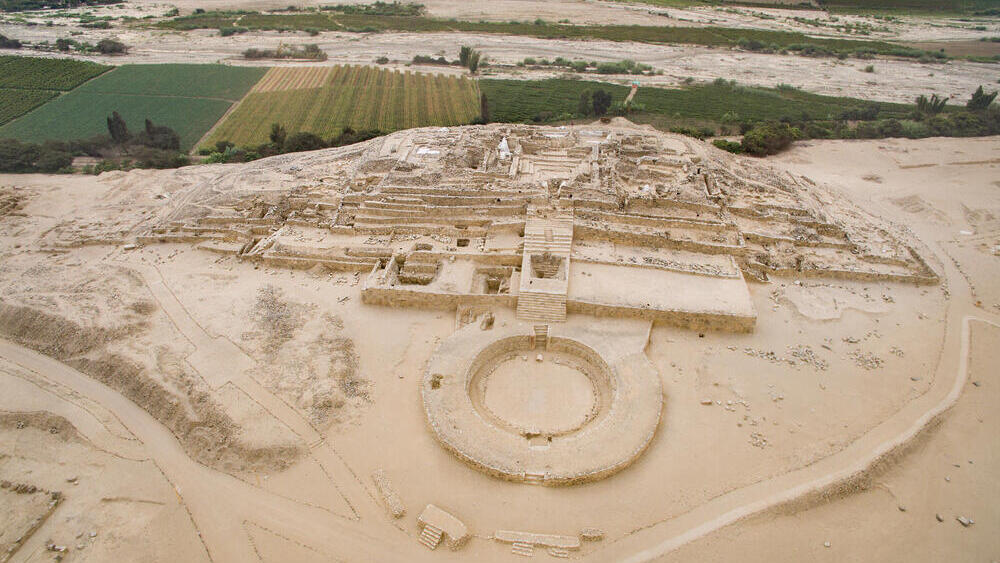The woman, estimated to have died between the ages of 20 and 35, was buried in the ruins of the sacred site of Aspero, in the city of Caral, part of the Norte Chico civilization. Her burial plot contained striking artifacts, including a toucan beak inlaid with green and brown beads and macaw feathers used as clothing adornments — evidence of her high social status.
Her body was wrapped in various materials, including cotton fabrics. Despite the passage of millennia, her skin, hair and fingernails remained intact. The grave also contained a snail shell from the Amazon, about 30 sweet potatoes, a stone bowl, a woven basket and a fishing net. She stood about 1.5 meters tall (4 feet 11 inches).
While her identity is still unknown, archaeologists believe she held a high-ranking social position. She lived during the height of the Norte Chico civilization, known for its urban centers, monumental architecture and advanced social organization.
Get the Ynetnews app on your smartphone: Google Play: https://bit.ly/4eJ37pE | Apple App Store: https://bit.ly/3ZL7iNv
Caral lies in the Supe Valley about 180 kilometers (112 miles) north of Lima and 20 kilometers (12 miles) from the Pacific Ocean, and has been designated a UNESCO World Heritage Site since 2009.
At its peak, the Norte Chico civilization featured large-scale urban life previously unseen in the Americas, with elaborate pyramids and temples. During the woman’s lifetime, Aspero had at least 22 architectural complexes. The inhabitants are believed to have engaged in fishing and trade.
According to the archaeological team, the find suggests that women in Norte Chico society could reach positions of power. This discovery follows a similar 2016 excavation in Aspero, where remains of another elite woman were found, buried with decorative pins shaped like birds and monkeys.
As the civilization lacked a known writing system, researchers rely solely on material evidence to reconstruct its social structure. The team is now studying the woman's remains and grave goods to learn more about her health, diet and cause of death. The findings may also shed new light on the role of women in the earliest urban society in the Americas.




